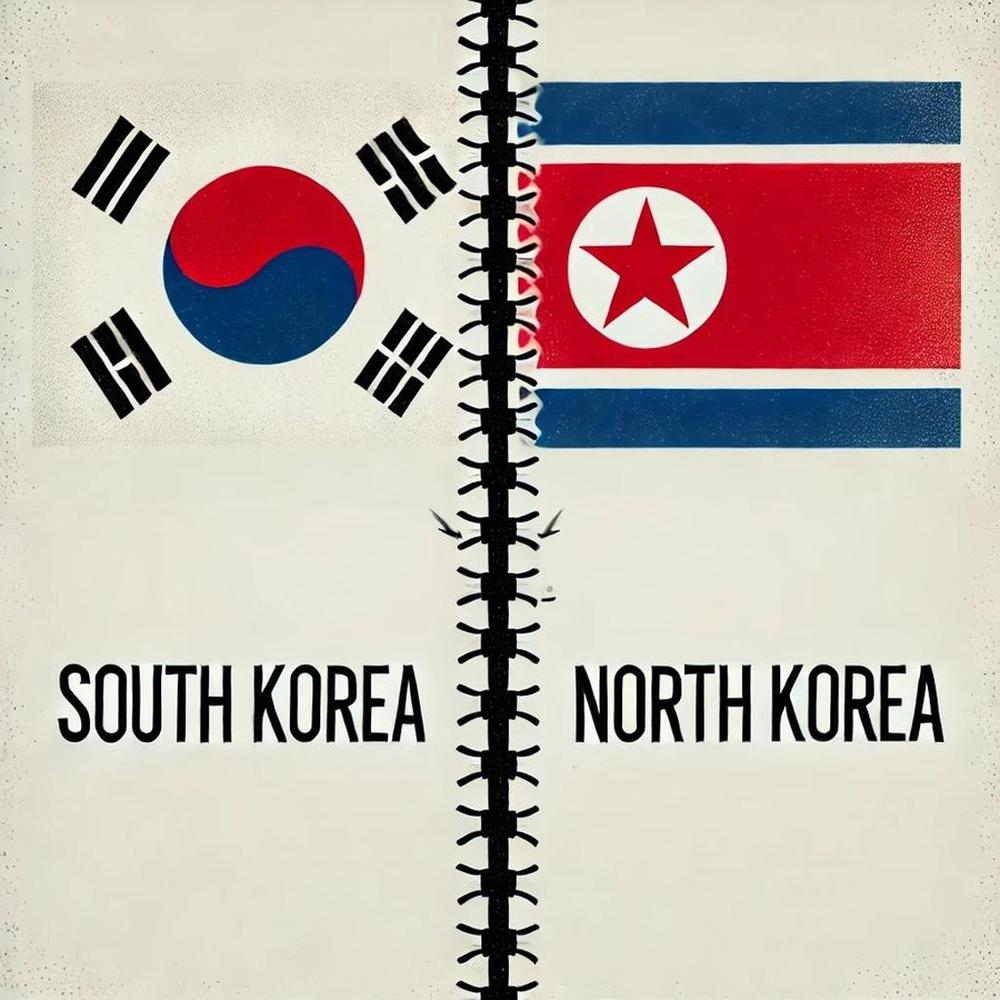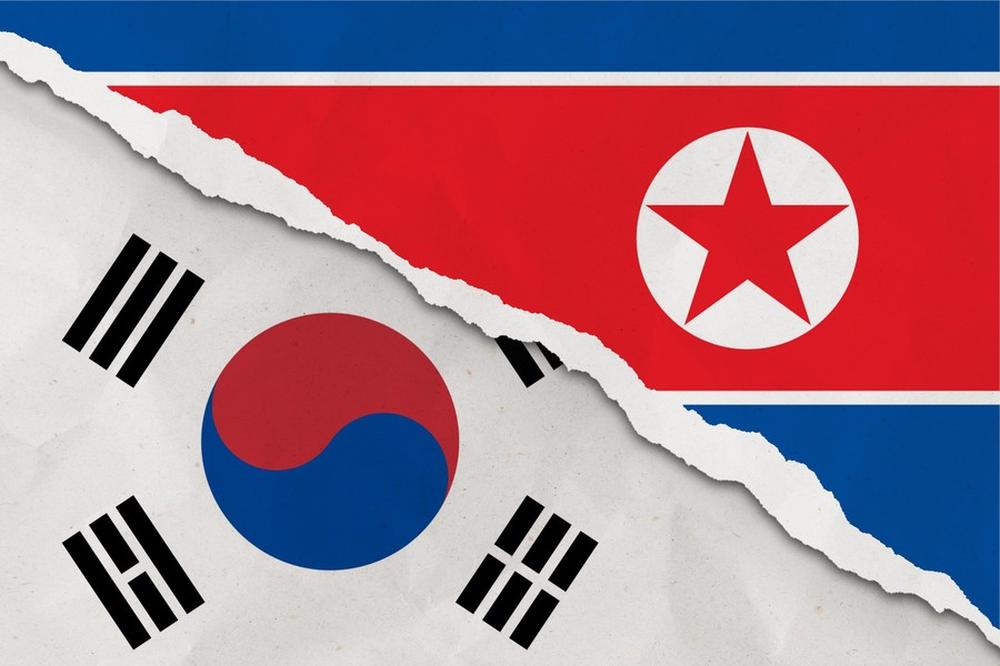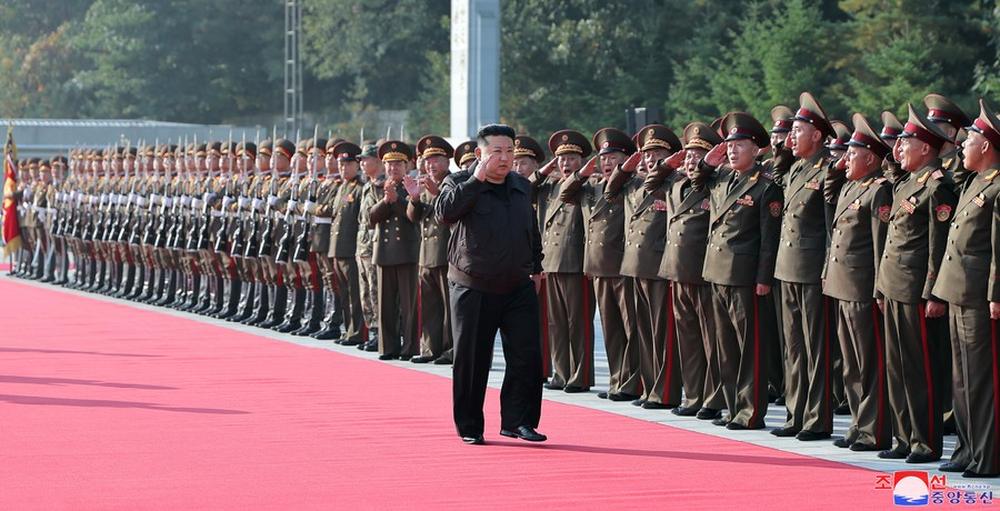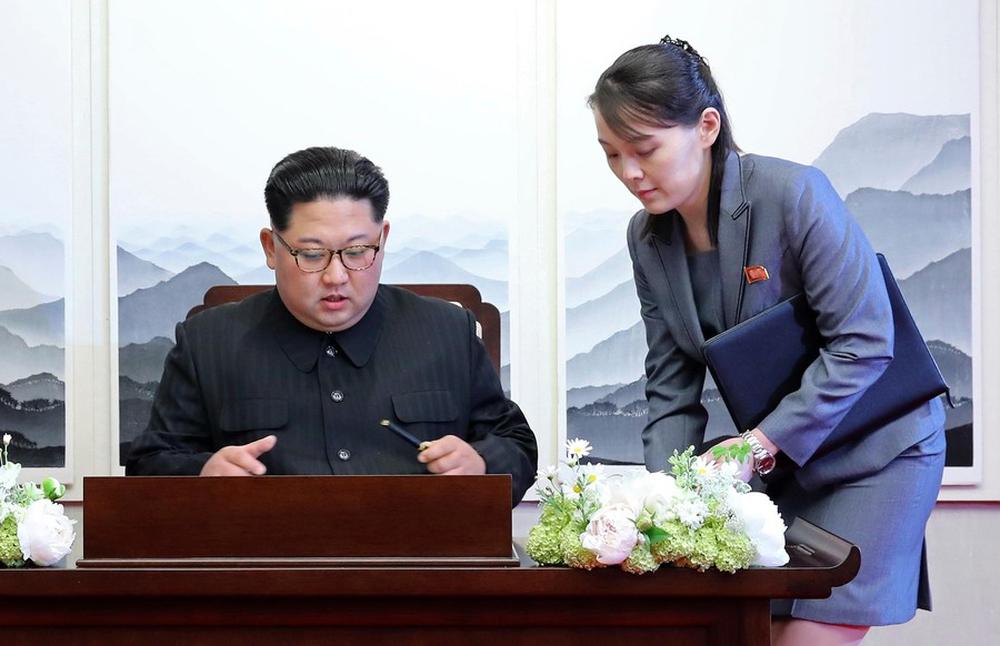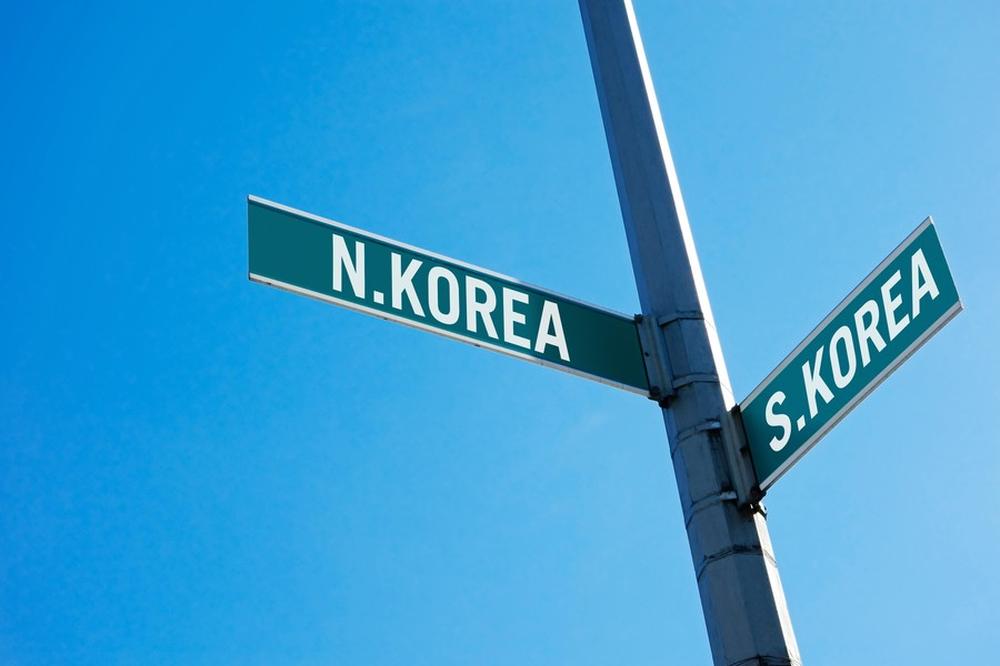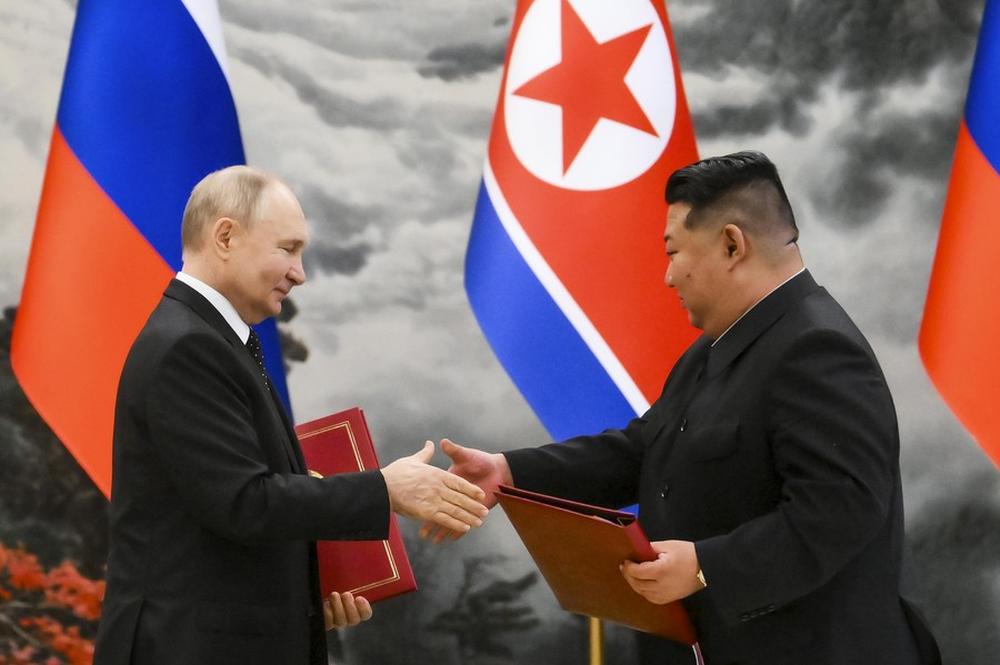- #Inter-Korean Relations
- #North Korea
- #Sanctions & Human Rights
- #US-ROK Alliance
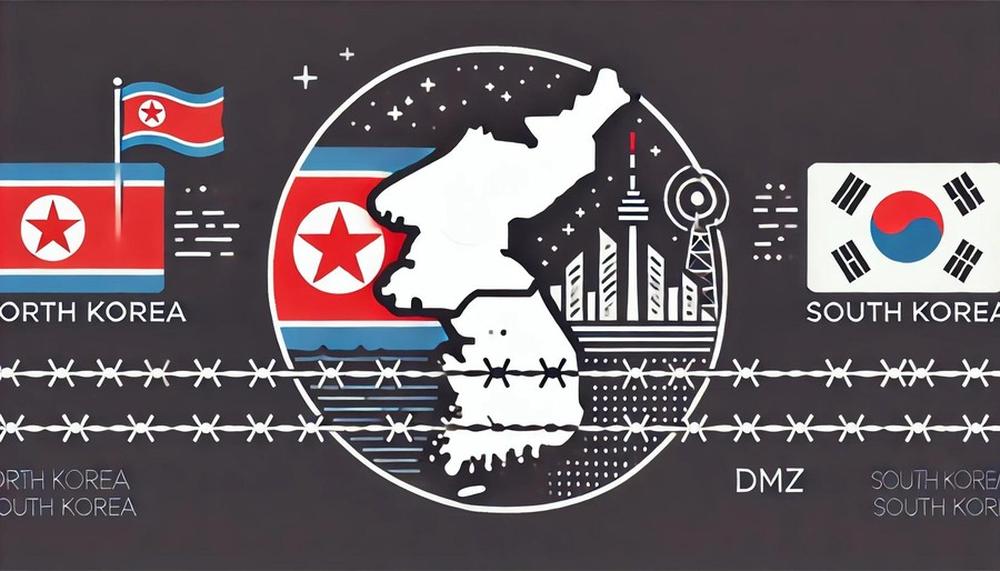
► Kim Jong Un's "Two-State Theory" signals North Korea's shift from unification rhetoric to legitimizing permanent division as a strategic response to internal and external pressures.
► The Two-State Theory undermines peace by perpetuating conflict through nuclear armament and ideological isolation, mirroring the confrontational approach of Soviet-era "peaceful coexistence" and legitimizing North Korea’s authoritarian regime.
► Responding to North Korea's Two-State Theory under the guise of peaceful coexistence merely entrenches division and perpetuates a nuclear-armed dictatorship, as true peace requires a unified, denuclearized Korea founded on liberty and human rights.
One year ago, Kim Jong Un introduced the "Two-State Theory," rejecting unification and the notion of a unified Korean identity—a significant departure from North Korea's historic stance. Since 1948, North Korea has pursued a unification policy rooted in nationalism and autonomy, placing ethnic identity at the heart of its sovereignty and legitimacy. Historically, its leadership has leveraged ethnic solidarity to portray South Korea as an American proxy, bolstering its ideological stance and influencing nationalist factions within South Korea. This rhetoric has instilled in North Koreans a duty to "liberate" the South from the U.S. influence, securing domestic support for Pyongyang’s policies. North Korea’s nationalist agenda and unification imperative have thus served as strategic tools to reinforce internal unity, challenge the U.S.-South Korea alliance, and shape South Korean politics, all to advance reunification on terms favorable to Pyongyang.
Kim Jong Un’s sudden departure from these tactics reflects North Korea’s need for a strategic shift in response to mounting domestic and international crises. Without the means to advance its nuclear capabilities independently, Pyongyang has grown increasingly reliant on Russian support. Economic sanctions have worsened its economic troubles, while exposure to South Korean culture and foreign information has spurred potential discontent, necessitating a recalibration of its grand strategy. Moreover, Kim has likely concluded that engagement with South Korea yields diminishing returns, as Seoul remains committed to its U.S. alliance and opposes North Korea’s nuclear ambitions. Lastly, Pyongyang is determined to block unification under South Korean terms, fearing absorption due to stark disparities in inter-Korean competitiveness.
While the exact motivations behind Kim’s strategic shift remain uncertain, he has redefined North-South relations as adversarial and in a state of war. Over the past year, however, an alternative interpretation has emerged in South Korea: recognizing North Korea’s “Two-State Theory” could foster peace on the Korean Peninsula. This view argues that mutual recognition of North and South Korea as separate states might promote peaceful coexistence and that pursuing unification could provoke the North, threatening regional stability. This perspective contends that instability arises from both Korea's ethnic-centered policies and unification goals. It challenges the South Korean government’s commitment to ethnic unification as potentially endangering peace, contradicting the 1991 Inter-Korean Basic Agreement and South Korea’s constitutional mandate to pursue a peaceful reunification.
The question remains: can Pyongyang’s “Two-State Theory” be seen as conducive to peaceful coexistence, or does it imply a new paradigm beyond traditional coexistence theories? Addressing this requires examining peaceful coexistence discourses in international relations and their evolution in South Korea. Moreover, North Korea’s “Two-State Theory” appears not to advance peace but to undermine its interpretation as an extension of coexistence theory.
The doctrine of peaceful coexistence, articulated by Khrushchev in the 1950s, and the U.S. détente policy toward China in the 1970s, are classic Cold War strategies. Both, rooted in realist principles, viewed international politics through power balance and the security dilemma, seeking to manage competition and avoid direct military confrontation. The nuclear age’s mutual assured destruction (MAD) reinforced these approaches. Despite ideological divides, both doctrines institutionalized conflict management, with Khrushchev fostering a stable coexistence of socialism and capitalism and détente aiming to stabilize U.S.-Soviet relations and manage the existing order.
The Soviet doctrine of peaceful coexistence was not limited to avoiding military confrontation; it served as a strategic tool to strengthen and expand the communist system globally. This strategy upheld the Marxist-Leninist vision of communism as the inevitable successor to capitalism. Through peaceful coexistence, the Soviet Union aimed to reinforce its leadership within the bipolar order and reshape the international system along socialist lines. In contrast, the U.S. policy of détente focused on maintaining the status quo rather than spreading ideology. It aimed to stabilize the existing international order, preserve American hegemony, and strengthen leadership within the capitalist bloc. Its primary objective was to sustain the bipolar system, containing Soviet expansion while ensuring a stable global order under U.S. influence.
North Korea’s “Two-State Theory” bears a closer resemblance to the Soviet doctrine of peaceful coexistence than to the American policy of détente. First, North Korea’s approach is fundamentally revisionist. It seeks to undermine the international non-proliferation regime—a cornerstone of global stability—and to reshape the strategic balance on the Korean Peninsula in its favor, using nuclear capabilities as a key instrument. Second, its framework is deeply ideological, drawing a clear line between friend and foe. By actively blocking the spread of liberal democratic ideals, Pyongyang strategically reinforces its internal authoritarian structure, ensuring the regime's survival through ideological isolation.
Third, North Korea’s strategy diverges from détente in its outright rejection of increased interdependence with South Korea. It deliberately eschews reconciliation and cooperation, emphasizing confrontation and separation. In this sense, its revisionist, ideologically driven, and isolationist stance closely mirrors the Soviet Union’s peaceful coexistence strategy of 70 years ago.
North Korea’s Two-State Theory can also be understood in relation to past South Korean administrations’ inter-Korean policies. The Sunshine Policy of the late 1990s, under Kim Dae-jung, is often seen as a classic example of peaceful coexistence on the Korean Peninsula. However, it aimed to transform North Korea through engagement, promoting coexistence via exchange and cooperation rather than regime collapse. Similarly, aspects of the Moon Jae-in administration’s policy have been viewed through the lens of peaceful coexistence. Officials emphasized North Korea’s supposed desire to become a "normal state" based on a commitment to denuclearization. Like the Kim Dae-jung administration, they considered denuclearization essential to peace but assumed Pyongyang would eventually disarm.
Over the past year, arguments within South Korea interpreting North Korea’s Two-State Theory through the lens of peaceful coexistence have diverged significantly from the coexistence approaches of previous progressive administrations. Unlike Kim Dae-jung’s Sunshine Policy, these recent perspectives neither advocate for North Korea’s transformation nor view denuclearization as a precondition for coexistence. Similarly, the Moon Jae-in administration’s optimism regarding Pyongyang’s willingness to denuclearize, while overly idealistic, appears less hazardous than current calls to accept North Korea’s nuclear-armed status. Crucially, past coexistence strategies did not portray South Korea’s unification efforts, rooted in liberal democracy, as provocative toward the North. Instead, they upheld the unique intra-national dynamic of the 1991 Inter-Korean Basic Agreement, distinguishing inter-Korean relations from conventional state-to-state frameworks.
North Korea’s Two-State Theory undermines peace on the Korean Peninsula, as it envisions nuclear attacks and territorial occupation against South Korea, a nation of the same ethnic identity. It thus rejects any genuine pursuit of peaceful coexistence. Instead, the doctrine serves as a survival strategy for the regime, designed to prevent reconciliation and cooperation with South Korea, which could expose North Korean citizens to the values of freedom. Pyongyang’s reliance on nuclear weapons is absolute; to achieve its desired capability, it seeks more time and a stable strategic environment. No scholar of international relations would describe such behavior as a “coexistence strategy.”
The proposal to respond to North Korea’s Two-State Theory under the guise of a peaceful coexistence strategy is equally disingenuous. Proposals to avoid provoking Pyongyang, abandon unification efforts, and refrain from discussing denuclearization—despite its improbability—do nothing to promote peace. Instead, they merely ensure the survival of a nuclear-armed dictatorship. Similarly, the notion that both Koreas should achieve a balance of terror through mutual nuclear armament, followed by disarmament negotiations, is equally unrealistic. This is not because South Korea cannot develop nuclear weapons, but because there is no guarantee that such disarmament would ever occur. India and Pakistan, despite their mutual nuclear capabilities, have never engaged in arms reduction talks, nor has their relationship been described as peaceful coexistence.
North Korea's two-state theory is by no means a doctrine of peaceful coexistence. Accepting its anti-national and anti-unification premise fails to secure peace between the two Koreas and, instead, risks entrenching the permanent division of the Korean Peninsula. Genuine peaceful coexistence can only be achieved through a unified Korea, free from nuclear weapons and grounded in the principles of liberty and human rights.
Dr. Sung-Yoon Chung is a Senior Research Fellow and Director of the Unification Policy Research Division at the Korea Institute for National Unification (KINU). He holds a B.A., M.A., and Ph.D. in Political Science from Korea University. His research focuses on unification policy, inter-Korean relations, and North Korea’s nuclear issues. Previously, he served as a Research Fellow at American University (2005) and a Research Professor at Korea University (2007–2014). He has also held roles as Chair of the Foreign Policy Committee for the Korean Association of International Studies (2021–2023) and as an Advisory Member to South Korea’s National Security Office (2022–2024), and advises the Ministries of Foreign Affairs, Unification, and National Defense. Dr. Chung’s recent publications include Issues of North Korea's Nuclear Program in 2025 (2024), Strategic Shifts in Kim Jong-un’s Policy toward South Korea (2024), and Challenges and International Cooperation on North Korean Nuclear Issues (2022).
